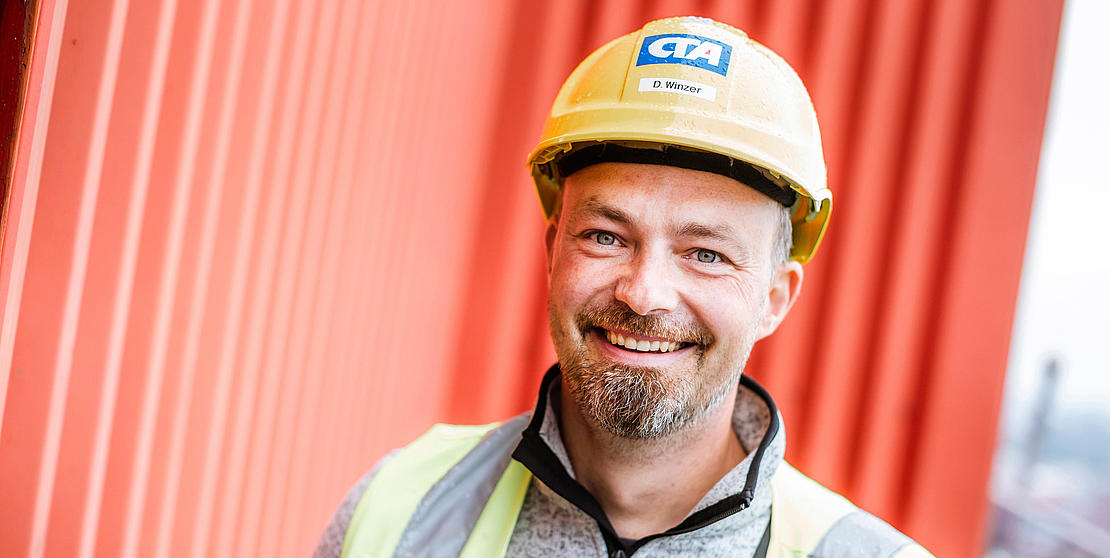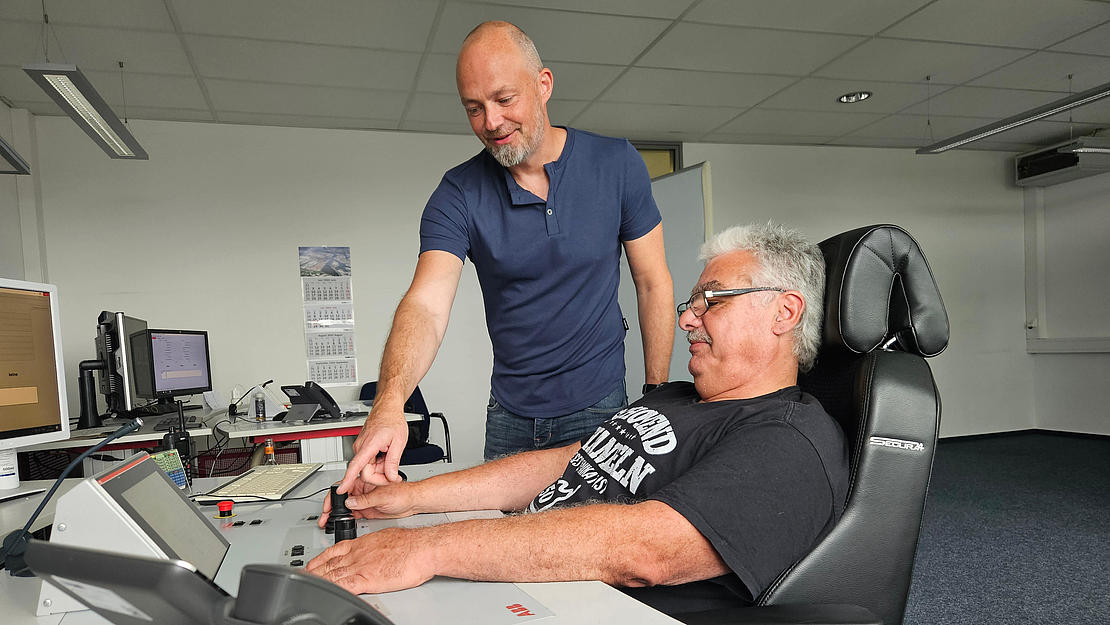
At the office building of HHLA Container Terminal Altenwerder (CTA), there are now four rooms for remote control operators with 13 work stations. Today all of them are occupied, with the operators working in shifts. Dennis Winzer is part of the team and has taken the time to explain what his job involves.
As an expert in port logistics, Dennis is both a specialist and an all-rounder. He primarily works as a remote control operator and trainer in this activity. He is also a gantry crane supervisor, rail gantry crane operator and checker in the area of rail transport. “This gives me direct contact to what happens in practice and keeps me aware of any changes in live operations, such as in control operations or when there is new equipment.”
The other 100 or so remote control operators at CTA also have multiple qualifications and swap their activities frequently. Dennis and the team are in favour of this: “This means that sometimes we have more movement, sometimes less, and a lot of variation.” He adds that the job of remote control operator is also suitable for people with reduced mobility.
Our knowledge is incorporated into the planning so that everything works better in practice later.
Dennis’ duties include sharing his perspective so that the work can be done more ergonomically and efficiently: “Our knowledge is incorporated into the planning so that everything works better in practice later. This could be a particular camera angle that makes the job easier, or a button that needs to be placed somewhere else.”
In the bright room, four remote control operators are looking intently at their screens. They are guiding containers using small joysticks. As part of an automated process, the automated portal cranes remove the containers from the block storage facility and place them on the tractor units standing by. For safety reasons, however, the remote control operators must take control again when the trucks are being loaded.

The camera images that Dennis sees on his computer focus on the four corners of the container. They need be positioned precisely onto the correct pins of the truck chassis. “Please exit the vehicle!” is suddenly heard in the room – and also by a trucker in the terminal via the loudspeaker. Contrary to the rules, he wanted to wait in the comfort of his cab while the container was being placed on his truck.
The operators are assigned their tasks by the IT system. If the automated mode is insufficient in a particular area of the block storage facility, for example, the containers sometimes have to be moved manually.
However, this is the exception rather than the rule across the 26 storage blocks. The automated system already brings the containers in advance to a position that is optimal for collection. This repositioning process starts at the latest when the trucker enters their transport order into the system at the gate.
Through the windows, the remote control operators can track how import containers are collected by trucks or export containers are delivered by rail. Dennis points to the rail terminal, where his current project is handling boxes. It centres on the automation of a rail gantry crane which is already operating well during testing. In his view, automated rail loading is quieter and more precise, but not yet as fast as with an experienced crane operator.
Dennis stresses that humans will continue to be the determining factor at CTA. “We regularly have to intervene, especially in difficult situations. Sometimes a truck chassis is worn out, the camera delivers imprecise images or a trucker is careless. We remote control operators have all of this in our sight!”
Curious about us?
They have a lot to say – from the port, from the past, from their day-to-day work or from abroad.
Read more